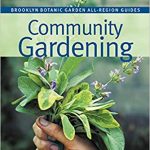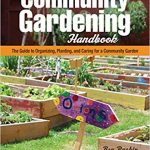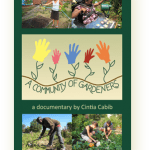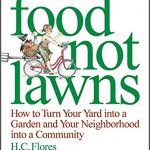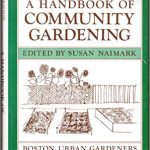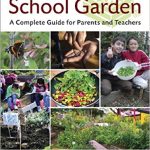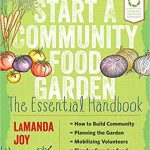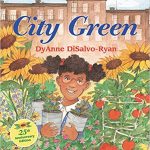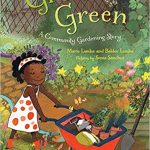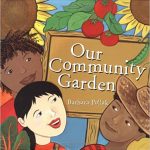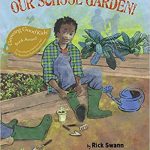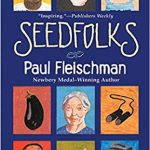Community Garden
Library Guide
This Community Garden Library Guide will lead you to books, DVDs, and web resources to get you started on your community garden, covering topics such as: planting a community garden, gathering volunteers and fundraising, cultivating community networks, and inspiring young gardeners.
The books and DVDs listed in this guide are available at the Lora Robins Library at Lewis Ginter Botanical Garden, and can be borrowed by Garden members.
WHAT ARE COMMUNITY GARDENS?
A community garden is a shared green space that is planned, created, and maintained by a group of community members for the benefit of the entire community. Every community garden is unique and reflects the needs and desires of the surrounding neighborhood.
WHY COMMUNITY GARDENS?
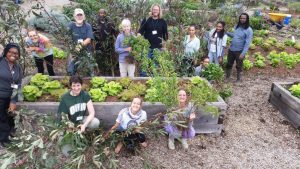 A successful garden offers the following benefits to the surrounding community:
A successful garden offers the following benefits to the surrounding community:
- Provides access to healthy fresh food
- Reduces the travel distance—and therefore the carbon footprint—of food
- Improves community health through better nutrition and increased physical activity
- Beautifies the neighborhood by creating green space
- Develops a sense of community identity, ownership, and stewardship
- Instills a sense of wellness and belonging among community members
- Serves as an outdoor classroom
- Offers a peaceful oasis from daily stresses
In short, community gardens build stronger, healthier, and more sustainable communities.
WHERE CAN I FIND COMMUNITY GARDENS?
People start community gardens in places that are convenient and hold meaning for their communities. These gardens can be found in neighborhood plots, schools, hospitals, and on residential housing grounds. Looking to get involved? The Beautiful RVA Map shows community gardens and other public green spaces in Greater Richmond.
BOOKS FOR ADULTS
Community Gardening by Brooklyn Botanic Garden (2008)
This guide to community gardening uses case studies to demonstrate how to safely and sustainably produce food, unite neighborhoods, educate and empower youth, and more. While this book does not offer guidance for those looking to start a new garden, it does refer readers to a number of organizations that do, along with other external resources.
The Community Gardening Handbook: The Guide To Organizing, Planning, and Caring for a Community Garden by Ben Raskin (2017)
This clearly-written manual provides simple advice for those interested in launching community gardens and sustaining them in the long term. Raskin presents the essentials for successful community gardens, from site location considerations to community engagement and fundraising. A directory of suggested plants includes growing, tending, and harvesting tips.
A Community of Gardeners: A Documentary by Cintia Cabib (2011)
This documentary gives voice to young people, seniors, immigrants, garden volunteers, and educators involved in seven urban community gardens in Washington, D.C. Through their experiences, viewers glimpse the many roles of community gardens: essential sources of food, places of healing, outdoor classrooms, connections to homelands, neighborhood centers, and oases of calm and beauty.
Food Not Lawns: How to Turn Your Yard into a Garden and Your Neighborhood into a Community by H. C. Flores (2006)
Activist and urban gardener Heather Flores shares her nine-step permaculture design in this manual for farmsteaders and city dwellers alike. Emphasizing friendship-based community organizing and principles of permaculture and gift economy, Food Not Lawns teaches readers to transform their neighborhoods into communities.
A Handbook of Community Gardening by Boston Urban Gardeners (1982)
Written by a coalition of Boston community gardeners, this handbook offers urban and suburban gardeners advice on creating a community garden from the ground up, including gathering invested community members, selecting a site, improvising materials, securing funding, and launching a farmer’s market or food co-op.
How to Grow a School Garden: A Complete Guide for Parents and Teachers by Arden Bucklin-Sporer and Rachel Pringle (2010)
Written by two educators and gardeners, this manual offers guidance to parents, teachers, and school administrators interested in developing school gardens. How to Grow a School Garden covers the entire process, from planning and fundraising to site preparation, to teaching in the garden, complete with activities, recipes, and lesson plans for students in grades K-8.
Start a Community Food Garden: The Essential Handbook by LaManda Joy (2014)
This comprehensive guide offers best practices and advice for anyone looking to start a community garden from the ground up: fundraising, community organizing, site sourcing, garden design and planning, finding and managing volunteers, and managing the garden through all four seasons. The final chapter is a growing guide, intended as an educational tool for community garden leaders teaching new members how to garden.
BOOKS FOR KIDS
City Green by DyAnne DiSalvo-Ryan (1994)
Smack dab in the middle of Marcy’s city block is a vacant lot, lonely and littered with garbage. One spring, Marcy shares an idea: instead of a sad lot, why not build a beautiful and growing green space for everyone in her community? (Ages 4-8)
Green Green: A Community Gardening Story by Marie Lamba and Baldev Lamba (2017)
GREEN GREEN grass is fresh and clean for a family to play in. And BROWN BROWN dirt is perfect for planting a garden. But when GRAY GRAY buildings start to rise up, and a whole city grows, can there be any room left for green space? In this poetic and color-filled picture book, young readers will see the small, simple things they can do to help our world become more GREEN GREEN! (Ages 4-8)
Our Community Garden by Barbara Pollak (2004)
What would you include in your garden? Cherry tomatoes, green peppers, and delicious strawberries? Tomatillos, carrots, and skinny eggplants? Audrey and her friends play, grow, and discover nature’s possibilities in their community garden. (Ages 4-8)
Our School Garden by Rick Swann (2012)
New city. New school. Michael is feeling alone…until he discovers the school garden! There are so many ways to learn (Taste a leaf? Dig for bugs?), and work to do. But the garden offers even more: making school garden stone soup, writing found poems and solving garden riddles, getting involved in community projects such as Harvest Day, food bank donations, and spring plant sales. Each season creates a new way to learn, explore and make friends. (Ages 6-10)
Seedfolks by Paul Fleischman and Judy Pedersen (1997)
Infested with rats and filled with garbage, a vacant lot in a disconnected Cleveland neighborhood seems an unlikely place for a garden. Until a Vietnamese girl plants six lima beans. Over the course of a year, the young garden flourishes and a neighborhood of strangers grows into a community. (Ages 9-12)
WEB RESOURCES
American Community Gardening Association
The American Community Gardening Association provides resources supporting community gardening throughout the U.S. and Canada. Check out their Resources page for how-to guides, sample forms, articles, and book reviews.
Beautiful RVA Community Greening Toolkit
Beautiful RVA’s partners have developed a set of educational tools to help you begin creating a healthier, more sustainable environment. Resources include landscape design templates, timelines, budget templates, information about native plants, and an interactive GIS map of vacant lots in Richmond, VA.
Community Gardening: Policy Reference Guide
Created by the Public Health Law Center, this guide offers a road map for how local laws and policies can impact local gardening efforts. For even more information on ways that local policies can support gardening efforts, check out this webinar.
Ginter Urban Gardeners
This 12-week course teaches sustainable horticulture, urban greening and community building, to provide citizens with the skills necessary to increase community-supported urban green spaces. Training sessions take place throughout Richmond’s neighborhoods, through presentations, discussions and hands-on activities. The registration fee is $150; financial assistance is available.
Richmond Grows Gardens
The City’s Richmond Grows Gardens program makes city-owned property available for commercial gardens and community gardens via an online application process. In addition to application information, Richmond Grows Gardens provides links to local organizations, garden suppliers, and gardening advice.
University of Missouri Extension Community Gardening Toolkit
This online toolkit provides a guide to planning, starting and sustaining a community gardening project. This robust toolkit comes with a Gardeners’ Welcome Packet, an editable set of documents to help new and established gardeners stay organized.
U.S. Department of Agriculture Community Gardening
The USDA offers a list of resources for and about community gardens.
